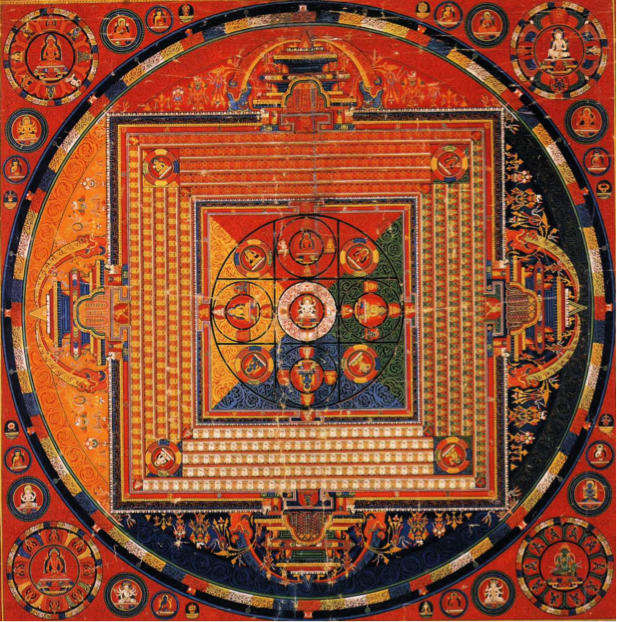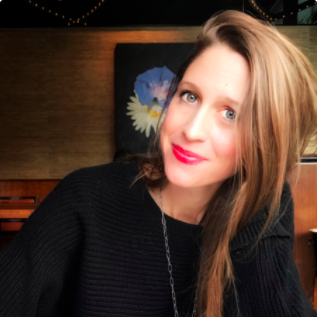In Todd Sampson’s series, Redesign My Brain, he is taught by an experienced “memoriser” how to internalise and recall the order of a pack of cards by tying certain clumped sets to different rooms within his home. This exercise illustrates how the human brain is naturally geared to use “place” as a means to chunk and remember information.
Within learning design, our focus is clearly not on rote memorisation of content, but there is great merit in utilising this idea of place as a way to locate and anchor information.
Most critically for online learning, this system can work for entirely virtual or imagined spaces. You imagine the different rooms in your home to memorise the cards; there is no need to physically be there. All you need is a mental model of possible spaces that are significantly different, such that moving between them is meaningful and mentally mappable. So familiarity with a discrete collection of distinct and connected places is enough to take advantage of this way to compartmentalise information.
The Nature of Virtual Places
Creating virtual spaces as a mnemonic device is something that online learning has the opportunity to do, and we needn’t go to the extent of creating elaborately rendered 3D worlds. Virtual spaces can be created in a learner’s head with simple descriptions and reliance on a bit of their imagination.
Text adventure games showed that individuals are capable of immersing themselves in a world just by providing brief descriptions of different places; your mind readily populates further detail. Connections between the different places are established and reinforced by the act of navigating back and forth between them, building familiarity and a mental map.

How to Build a Place
From the above examples, it appears that we need three key things to make use of this means of compartmentalisation:
- A suggestion of place, beyond the plane of the screen
- A series of such places (nodes) that are distinct from one another
- A way to navigate between the places, creating connections and familiarity with the relationships between the nodes (the network)
Build a Place Using Text
Let’s walk through an example. You could create two rooms:
Where would you like to go?
- The east wing of the museum.
- The west wing of the museum.
While these places are differentiated in terms of cardinal points, we should do a bit more work to make them more distinct from one another. Perhaps something like this:
Where would you like to go?
- The east wing of the museum.
- The basement of the museum.
With this simple change, the two places become a lot more distinct. The difference in elevation is a factor, and we very quickly start to imagine a different type of space. Closer walls in a basement, less frequented, more industrial. Another thing that helps here is the different paths that we imagine in order to get to these separate places. So perhaps we can help reinforce that a bit more explicitly:
Where would you like to go?
- The east wing of the museum, via the grand doorway straight ahead.
- The basement of the museum, via the small staircase to the right.
The next thing we need are design or decorative cues to mentally differentiate these spaces once we’re there. I’d argue the “cheapest” way to do this is with some good old-fashioned storytelling. Trying to evoke as many sensory experiences as possible will give a place distinct character and will help the learner imagine it.
Taking the small winding staircase leads you to a musty corridor with a low ceiling, whitewashed walls, and pipes sticking out and running along in various places. You come to a room with what appears to be an piece of old scientific apparatus sitting on a simple wooden table.
Now perhaps you have the opportunity to unpack the nature of this piece of apparatus in the learning experience. By giving it context, this object is given a bit of mystique and is more interesting than if merely placed on the screen of the lesson.
Build a Place Using Visual Cues
Onscreen visual cues (as opposed to text-based cues or stories) can be used to reinforce place. This can be done quick and easy, or more in-depth. For a more in-depth cue, you might have background images to represent the different spaces. You might even use a mini-map with a locator pin to show learners their current location within the network of nodes. For a quick and easy solution, use of unique colours for the different areas, or a small image (such as a key artefact), could appear onscreen when the user is in a specific location. There are many ways to be creative between these two extremes; pick something that works for your content and the place you’re trying to create.
Crafting Movement Between Places
Lastly, learners need a reason to move between the different nodes and become familiar with the connections within the network. One option is a traditional key/lock mechanism that requires artefacts or knowledge gained in specific places to gain access to further areas. This is a long-used game mechanic so there are many possibilities to explore, and it could even relate to your specific subject matter.
Using an Object as a Place
Interestingly, a sense of place does not need to be tied purely to locations; it can also be linked to the investigation of an artefact. Here I use the example of “The Room”, a game that requires the player to puzzle out the operation of different arcane contraptions. The nodes exist as set viewpoints from which you can look at the object and move between. They provide a view of one side of the object, or allow you to zoom in to get a closer view of a particular feature. Being a puzzle game, there is a need to backtrack and revisit different views (nodes), so you gain familiarity with the network.

Some Inspiration for Creating Object-Based Places
To motivate you and provide jumping off points for your own ideas, here are some potential object-oriented mnemonic places I’ve been thinking about:
1. Unfolding Artefact
A bit like the objects in ‘The Room’, or a fortune telling paper game, I think it would be interesting to have single artefact unfolding in different ways as a means to create different nodes of place within a lesson.

2. Mandala
I was recently creating a diagram and our use of circles and progressive splitting off of elements ended up looking somewhat like a mandala, inspiring more thoughts on mnemonic place. A mandala-like diagram that is progressively built in layers could create a sense of mnemonic place, as long as the the layers are distinctly different enough.

3. Prezi
There are some interesting lessons to be learned from the interactive presentation tool, Prezi. While it presents a great way to focus on bites of information (and move between different hierarchy levels) in a mind-map like format, a single presentation runthrough structure may have not allowed it the greatest opportunity to showcase its unique characteristics. Something that allowed for different types of movement and required an awareness of the network between purposefully unique nodes would have taken better advantage of mnemonic place.

The Strength of the Power of Place
Here’s what I think is most important to remember when utilising mnemonic place in online learning: a lesson that provides a homogenised experience (e.g. a series of screens with a common visual style, featuring questions and content that one navigates), is likely to be chunked as one single entity — which is not helpful as a mnemonic device. A lesson with several distinctive places (and a mind-map connecting those nodes) has the enhanced possibility to be chunked as a selection of smaller, memorable experiences. In other words, it’s easier to recollect what you did and learned in “the blue room with the crystals”, as opposed to what you did and learned in “Section 3”.
Beyond the mnemonic possibilities, I’d argue that the sensation of “going somewhere” through a learning experience is more exciting or engaging for students. It feels like an exploration, a sensation that should be tied to knowledge discovery, but is too often lost in online learning experiences. Using “place” adds another tool to the learning design toolbox, and thus provides one more opportunity to make content more personally meaningful and effective.


